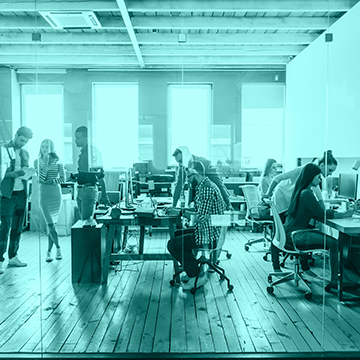Satellite
Satellite is changing what it means to be connected. It provides connectivity in the most difficult to serve areas and enables new and exciting use cases
Our Expertise
Satellite technology has undergone a huge shift in recent years. Companies like Starlink, OneWeb, Viasat and Amazon are taking advantage of the growth in low earth orbit satellites to offer never before seen levels of connectivity. As these companies compete with each other, airtime costs will fall and business cases will grow (e.g. This is not just for broadband. We are witnessing the beginning of mobile connectivity via satellite. Mobile networks will soon offer SMS and voice via satellite (e.g. Australia’s own Optus) with mobile broadband following soon. All of this is only possible thanks to the explosion of low earth orbit satellite tech.
In short, satellite connectivity can complete and augment terrestrial networks. Truly global coverage is within grasp. New capabilities are leading the ecosystem to innovate and traditional communication service providers are revisiting their positioning and strategies.
RDC supports strategic decision making to take full advantage of the satellite opportunity. Our experiences include a complete go-to-market strategy for Ground Control, a leading Sat-comms IoT provider. We recently led commercial and financial due diligence for a remote satellite connectivity firm. Our goal is to design future-proof strategies and use satellite to bring your business into the space age.
At RDC we can support you with:
- Satellite roadmap strategy
- Satellite go-to-market and channel strategy
- Satellite M&A
- Satellite market intelligence
- Convergence of Satellite, Cellular and Fibre communications
- Implementation of satellite into operations.
The evolution of satellite
The first successful satellite launch took place on October 4, 1957, when the Soviet Union sent Sputnik 1 into orbit. This kicked off of the space race and sparked a new era of satellite technology.
Over the next decade, satellite capability increased and diversified. In the 1960s, militaries and governments began using satellite communications, enabling secure communication and remote sensing. Following this, the 1970s saw satellite technology used for weather forecasting and broadcasting live television signals.
Subsequently, in the 1980s and 1990s, satellite technology continued developing, driven by advances in geostationary satellites and GPS. Satellite internet became available in the 2000s, allowing for connectivity in remote areas and on-the-go communication.
In 2020, over 1,600 satellites launched into space – the highest number launched in a single year. According to Union of Concerned Scientists (UCS) there were 5,465 satellites as of May 2022, 4,700 of which were in low earth orbit. Now, it is much more.
There are four main types of satellites
A satellite is any object that moves in a curved path around a planet. As an example, the Moon is Earth’s only natural satellite, but there are thousands more artificial satellites in orbit. These satellites can receive and transmit signals from to and from Earth.
There are four primary orbits for satellites, which roughly correspond to their classification:
Low Earth Orbit (LEO)
Typically, LEO satellites have an orbit time of around 90 to 120 minutes and require a low signal strength. As LEOs are close to the earth and have high speed data transfer, they have historically been used in high resolution satellite imaging. Now, LEO constellations are revolutionising communications. Working together, LEO satellites can provide total geographic coverage at lower latency and faster speeds than ever before. As of January 2024, 84% of satellites in the sky are LEO (over 7000) with more being launched seemingly every day.
Smallsats
Generally found in a low earth orbit, there are no official established standards for smallsat. The term typically refers to spacecraft with a mass of less than 500kg, though some experts consider the threshold to be less. There are several classifications of smallsats, including nanosatellites (mass of 1-10 kg), microsatellites (10-100 kgs), minisatellites (100-500 kgs) and CubeSats (based around a form factor of 10 cm cubes and with a mass of less than 2 kg). Smallsats are more cost effective than larger spacecrafts and easier to produce on mass, making them best suited for constellations.
Geostationary Equatorial Orbit (GEO)
GEO satellites orbit the Earth at the same speed as its rotation, maintaining a constant positioning over the Earth. A corresponding fixed antenna on Earth stays pointed towards the GEO satellite. Accordingly, telecommunications and weather monitoring use cases are most common. To maintain this orbit they must be 36,000km away from the Earth. This provides far slower speeds than consumers expect.
Satellites in this orbit make up ~ 12% of satellites. Satellites in GEO have a large range over the Earth, so as few as three equally spaced satellites can provide near global coverage.
Medium Earth Orbit (MEO)
MEO refers to satellites between the LEO and GEO orbits. Despite the huge range of distance this involves, they make up less than 3% of operating satellites. MEO satellites were historically used for GPS and other navigation applications. More recently, MEO constellations deliver lower-latency, high-bandwidth data connectivity to service providers, government agencies, and commercial enterprises.
Four uses of today’s satellites:
Communications: In the past, satellites have provided in-flight phone communications on airplanes, limited sat-phone calls and not much more. Now, LEO satellites are used to provide broadband to underserved areas. This is led by companies like Starlink and OneWeb. Soon these services will be available on mobile devices too, completely revolutionising the way we stay connected. For us, this is the most exciting development in telecommunications since the birth of MVNO
Television: Satellites send television signals directly to homes, but they also send signals from a central station to smaller stations that subsequently send the signals locally via cables or the airwaves
Navigation: GPS is satellite-based navigation. It’s used by civilians and the military for navigation on land, sea, and air, and is crucial in situations where other navigation tools, like maps are unavailable
Weather: satellites provide meteorologists with the ability to see weather on a global scale, allowing them to follow the effects events have on weather patterns e.g., volcanic eruptions and burning gas on oil fields.
Direct to device communications
Soon, satellites host voice and text messages, quickly followed by data. Mobile network operators are already signing deals with satellite providers to provide text and voice connectivity. For example, both main Australian network operators, Optus and Telstra, signed agreements with Starlink in 2023. This trend is not going away and will have serious consequences for the rest of the remote connectivity industry. There are huge technical hurdles to ensure device capabilities and seamless connectivity handovers, but be sure, they are being overcome as you read. Make sure you have plans in place to insulate yourself.
Converged connectivity
Satellite connectivity is another weapon in the arsenal when it comes to total coverage. When travelling through those empty areas where mobile towers haven’t reached people will be able to seamlessly stay connected. Without any effort, after losing mobile coverage, satellite will step in and maintain connection.
This will have implications across industries. Agriculture, logistics, transportation, mining, any remote or semi-remote connected application will be strengthened by satellite. Even use cases in connected areas (e.g. smart factories) will benefit through connection redundancies. Any connectivity down time can be mitigated. For example, the Optus outage in Australia in 2023 left millions of customers (consumer and enterprise) without connectivity for 14 hours. This had a catastrophic impact on daily lives and business operation. Introducing satellite with enough capacity to serve everyone will prevent something like this from happening again.
Mergers and acquisitions
Satellite capacity is in high demand. Further, satellite firms are currently severely undervalued. This is partly down to ViaSat-3’s malfunctioning upon launch resulting in significant losses. While satellite has a significant barrier to entry, the growth of companies like Starlink is opening reseller opportunities for service providers. Huge investment is coming into the market from the private and public sector. For example, the UK government invested half a billion dollars into OneWeb in 2020.
Satellite operators are beginning to transition from sole wholesale bandwidth suppliers to managed service providers. They are aiming to increase the value added to customers and avoid the commodity price trap. Operators, such as SES and Inmarsat, are pushing towards end-to-end network solutions for select markets and customers.
The market drivers pushing these changes include both the need for constant connectivity globally and low-cost high bandwidth for end users. Further, new sales models will put emphasis on revenue sharing, usage base models and co-investment. On top of this, megafirms like Amazon are moving into satellite. This will increase competition forcing decision makers to deploy strategies like M&A to stay on top. Amazons Kuiper system will begin operating at the end of 2024 and act as a direct competitor to Starlink.
Vertical integration
A growing trend in satellite, it allows operators to defend profit margins using differentiation, improve value to end users and grow capacity utilization.
Recent examples include:
Intelsat’s acquisition of Gogo in 2020 made Intelsat the direct provider of Wi-Fi to over 3,000 commercial aircraft. Before this, Intelsat had aimed towards vertical integration (e.g., investment in AMN backhaul provider and terminal developer Kymeta) with limited success compared to other leading commercial satellite operators such as Eutelsat and SES.
Eutelsat merged with UK rival OneWeb in July 2022 in a transaction that valued OneWeb at USD 3.4bn. It combined OneWeb’s constellation of 648 low earth orbit satellites with Eutelsat’s 36 geostationary satellites. The hope is to help compete with Starlink.
Viasat completed its acquisition of Inmarsat in 2023 for USD 7.3bn placing 14 satellites with global coverage at their disposal. Inmarsat’s typical vertical targets included mobile communications for ships, planes, and remote areas.
Satellites connect the unconnected
Satellite technology is a reliable alternative to terrestrial communications in environments where infrastructure isn’t feasible. For example, Starlink, operated by SpaceX, launched in October 2020 and had more than 2.2 million active subscribers worldwide by the end of 2023. Starlink has over 5,200 satellites in orbit. Starlink aim to have 42,000 satellites in orbit by mid-2027.
Working alongside cellular and fixed line networks, satellite can provide another dimension of connectivity. It can act as a redundancy to ensure constant connectivity or can be there to provide a complete replacement of connectivity options. Soon, satellite will flip the world of information exchange upside down.
Get In touch
If you have a requirement you would like to tell us about request a call back below



























